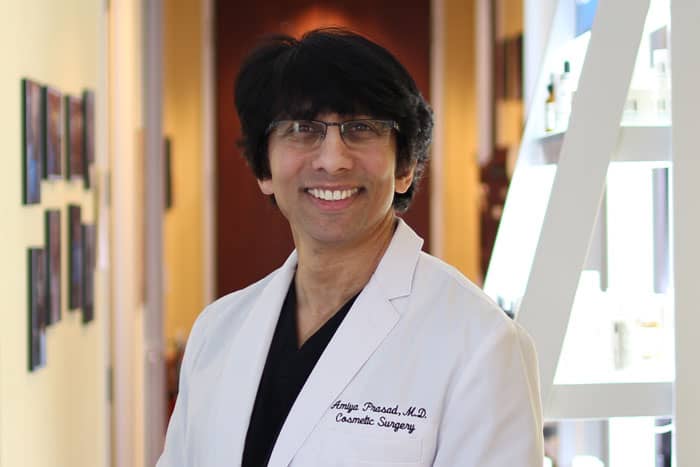- A young adult who does not have an eyelid crease and desires a double eyelid fold.
- A person in their forties or older who has sagging skin, and fat pockets behind the eyelids
- A person with drooping eyelids caused by a weak muscle, also known as ptosis
- Someone with an epicanthal fold covering the inner corner of the eyes who wants the eyes to appear larger, and show more of the inner corner of the eyes.
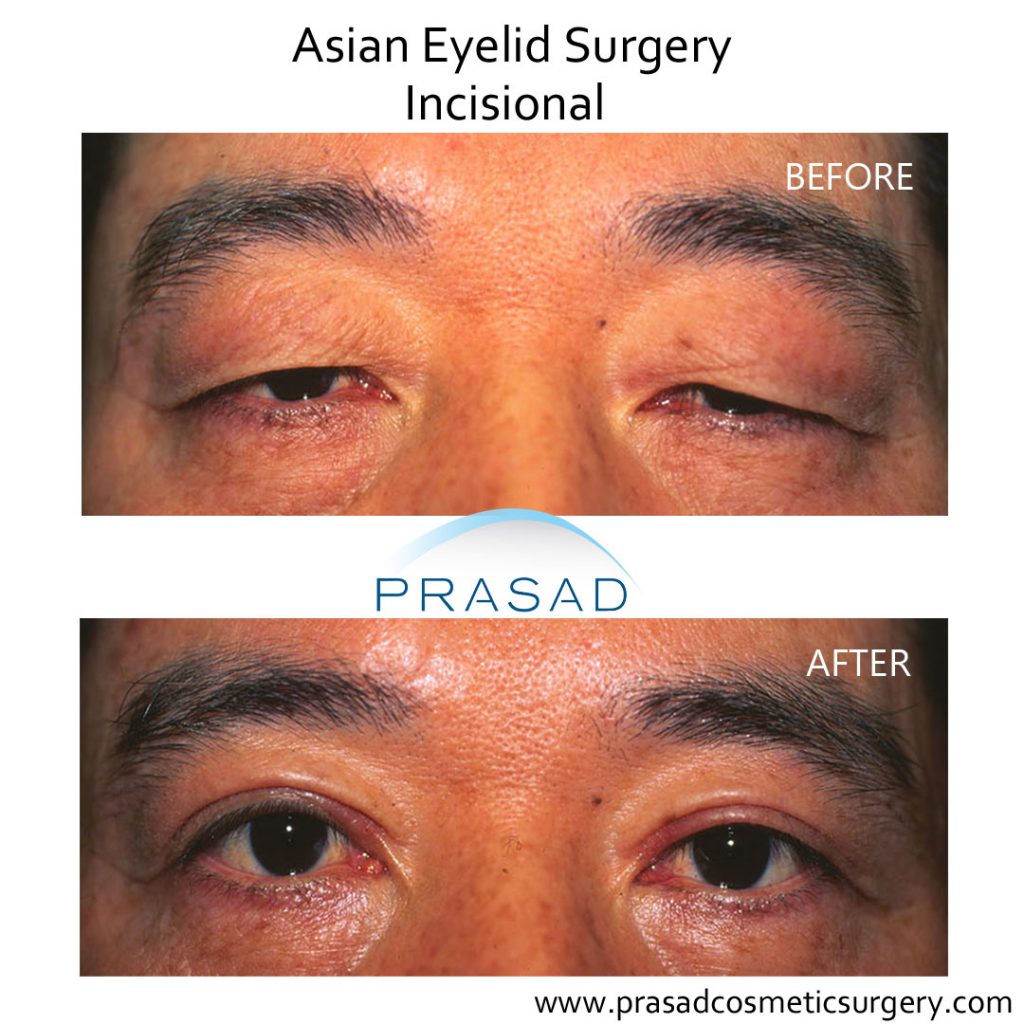
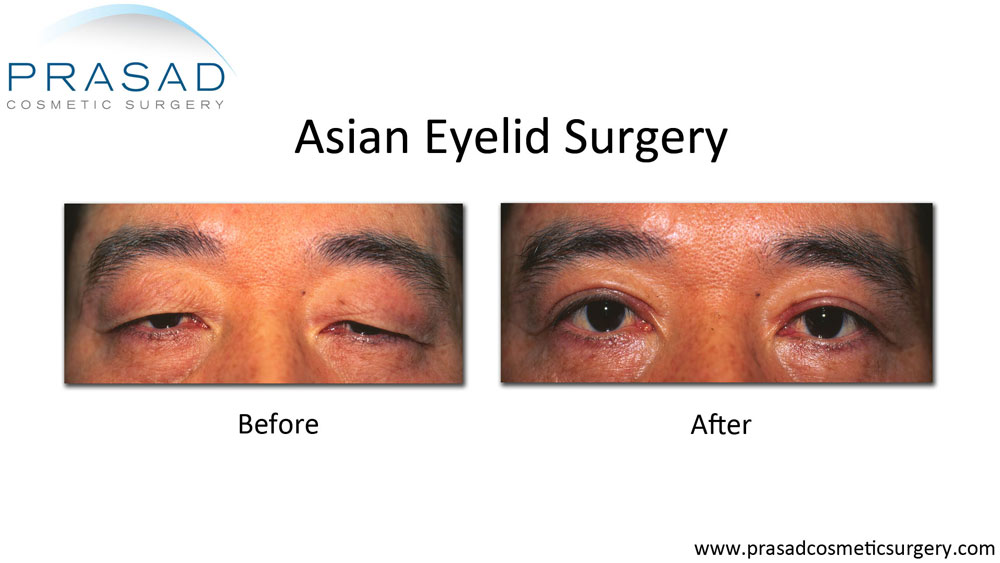
People who come to see me for a consultation are concerned about the appearance of their eyelids and creases following double eyelid surgery. They express a desire to appear natural after surgery in particular. So I demonstrate how their body would have naturally had an eyelid crease.
How to Make a Natural Eyelid Crease?
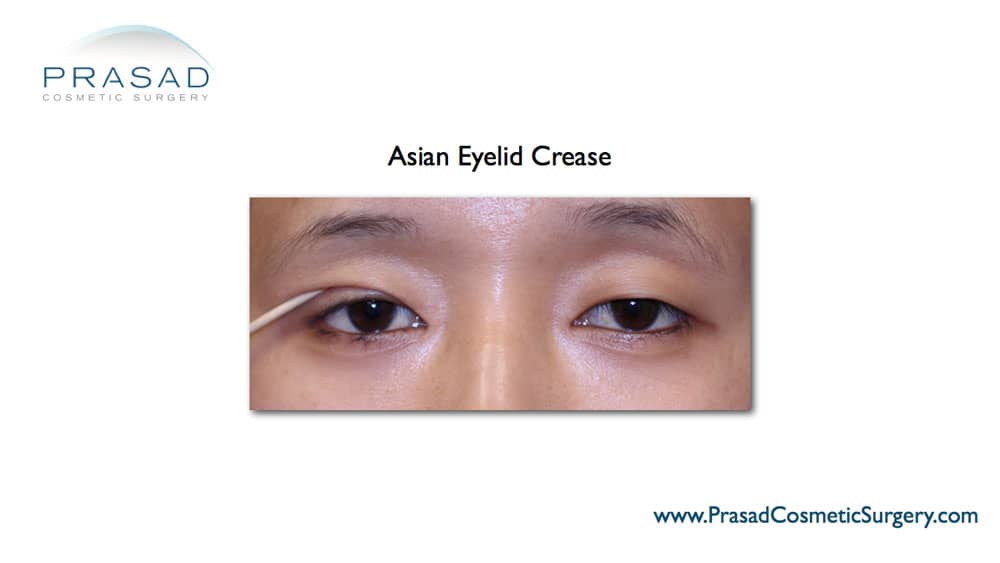
I do this by lifting the eyelid skin with a Q-Tip or an instrument to create a fold, revealing what the eyelid crease may look like after surgery. The anatomy of the eyelid is critical to comprehend. The tarsus is the backbone of the eyelid, and it is used to determine where the eyelid crease would naturally be, which is important when surgery is performed.
Furthermore, the levator muscle, which lifts the eyelid, is crucial in defining the eyelid crease. There are connections between the muscle and the skin when there is a natural crease. In Asian blepharoplasty, whether non-incisional or incisional, a suture connection is made to create a crease.
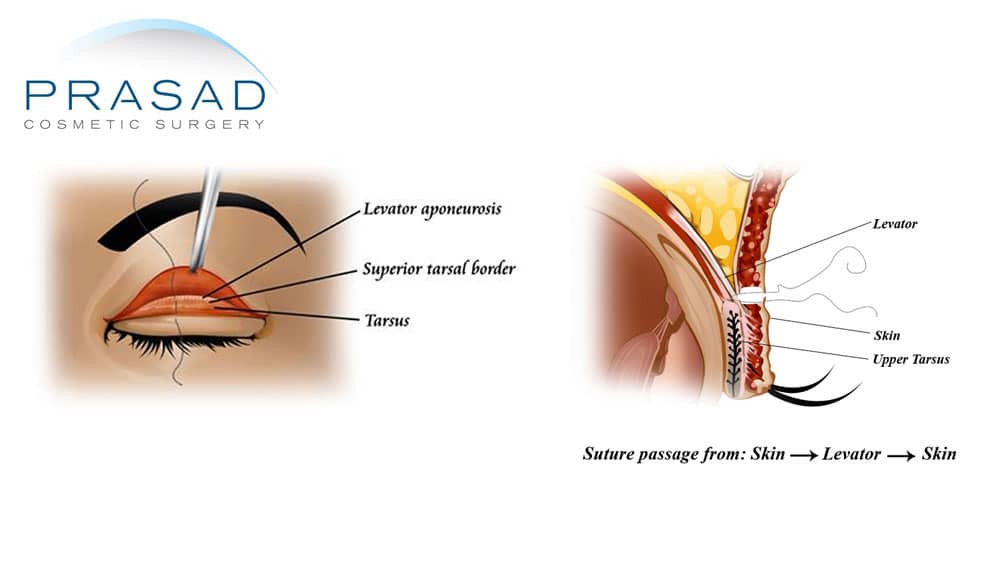
The simulated crease also allows me to determine whether the crease would naturally taper downward toward the inner corner eyelid fold or epicanthal fold, resulting in a nasally tapered crease. If the eyelid skin at the crease runs parallel until the skin blends toward the nasal bridge, this is called a parallel crease.
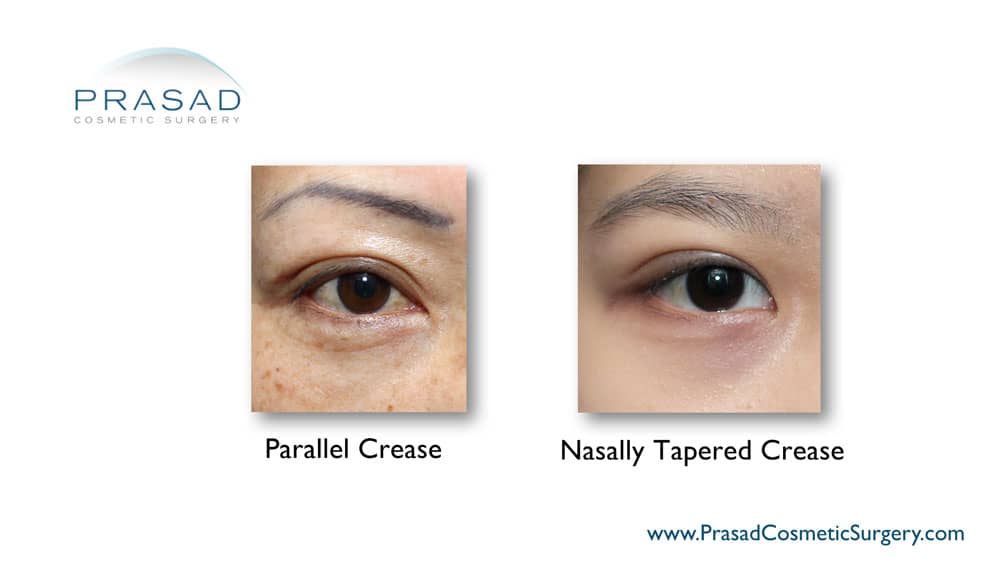
Importance of Anatomy and Limits of Eyelid Surgery for Asian Eyes
Some people come in with pictures of their favorite celebrities’ eyes because they want that shape for their own. This gives me the opportunity to help my patients understand the anatomical factors that influence eye and eyelid shape. These include bone structure, fat presence, skin thickness, soft tissue, and the relative prominence of the eyes.
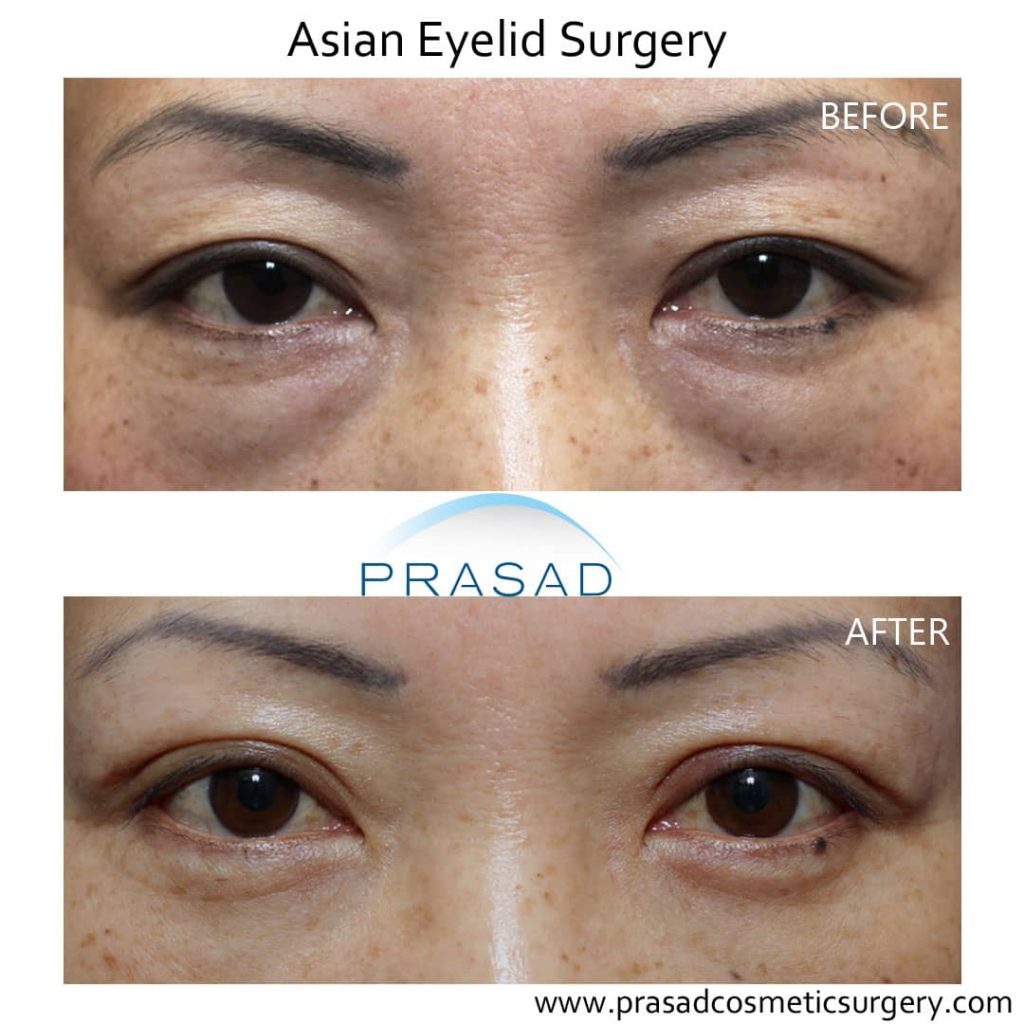
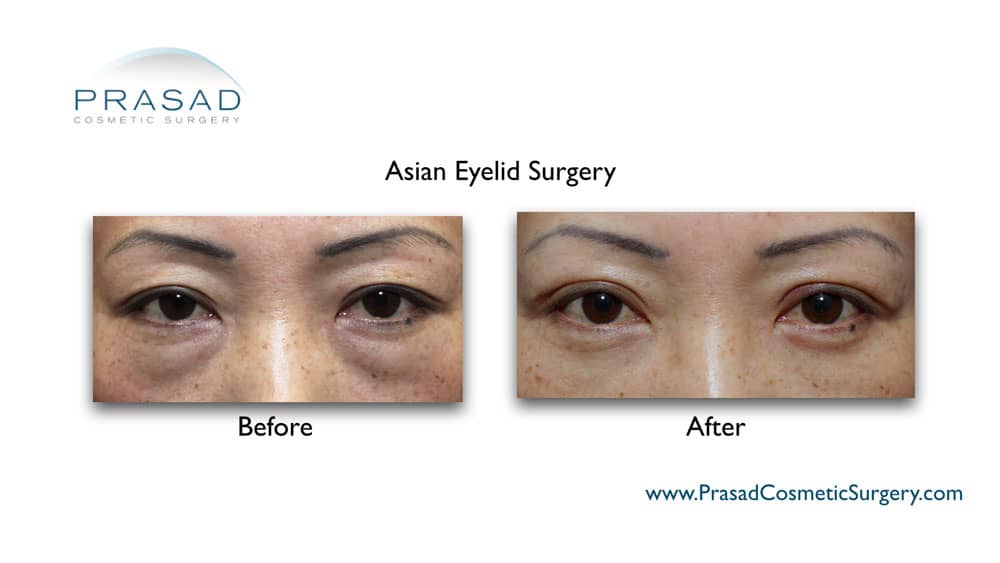
Of course, it’s important to understand the limits of the anatomy, which if compromised, can have an impact on the health of your eyes. The health and function of the eyes must never be jeopardized during any eye cosmetic procedure. I do explain how the procedure I perform can produce results similar to the celebrity but unique to the patient.
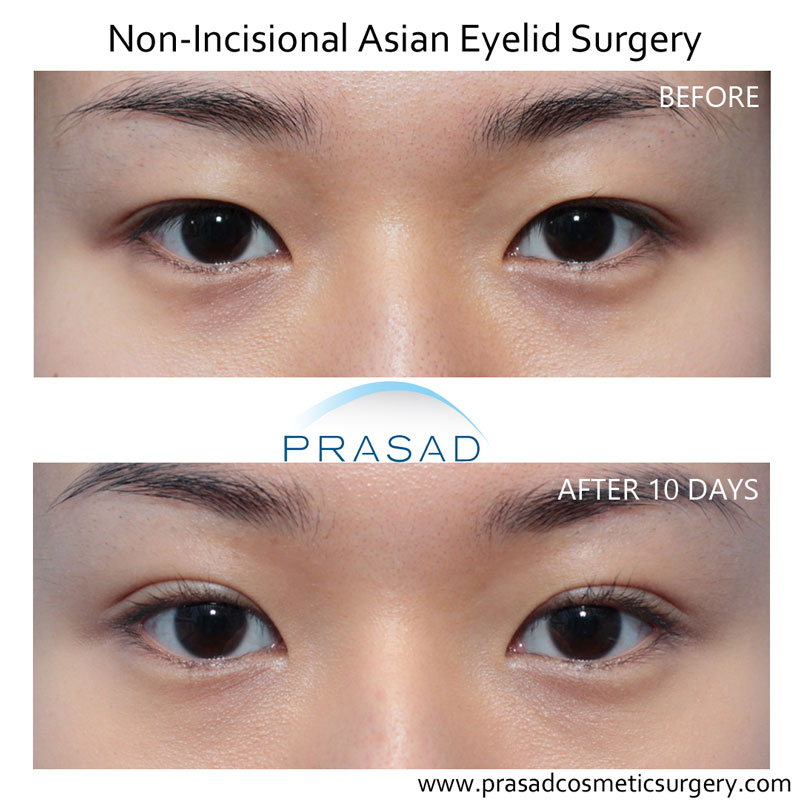
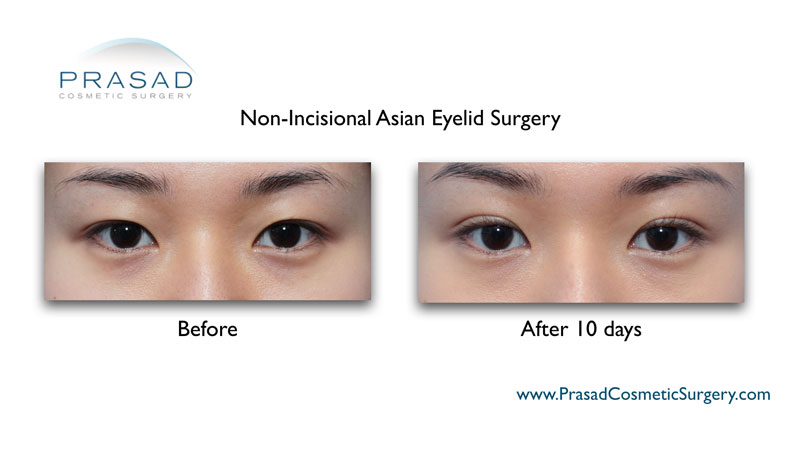
Objectives of Eyelid Surgery for Asian Eyes
There are two primary objectives of double eyelid surgery. The first step is to convert a single eyelid fold, also known as a monolid, to a double eyelid fold, also known as a double eyelid. The second goal is to make the eyes appear larger and more open, which adds vibrancy and vitality to the entire face. Having larger-looking eyes is a sign of beauty not only in Asian cultures, but in all ethnicities and cultures.
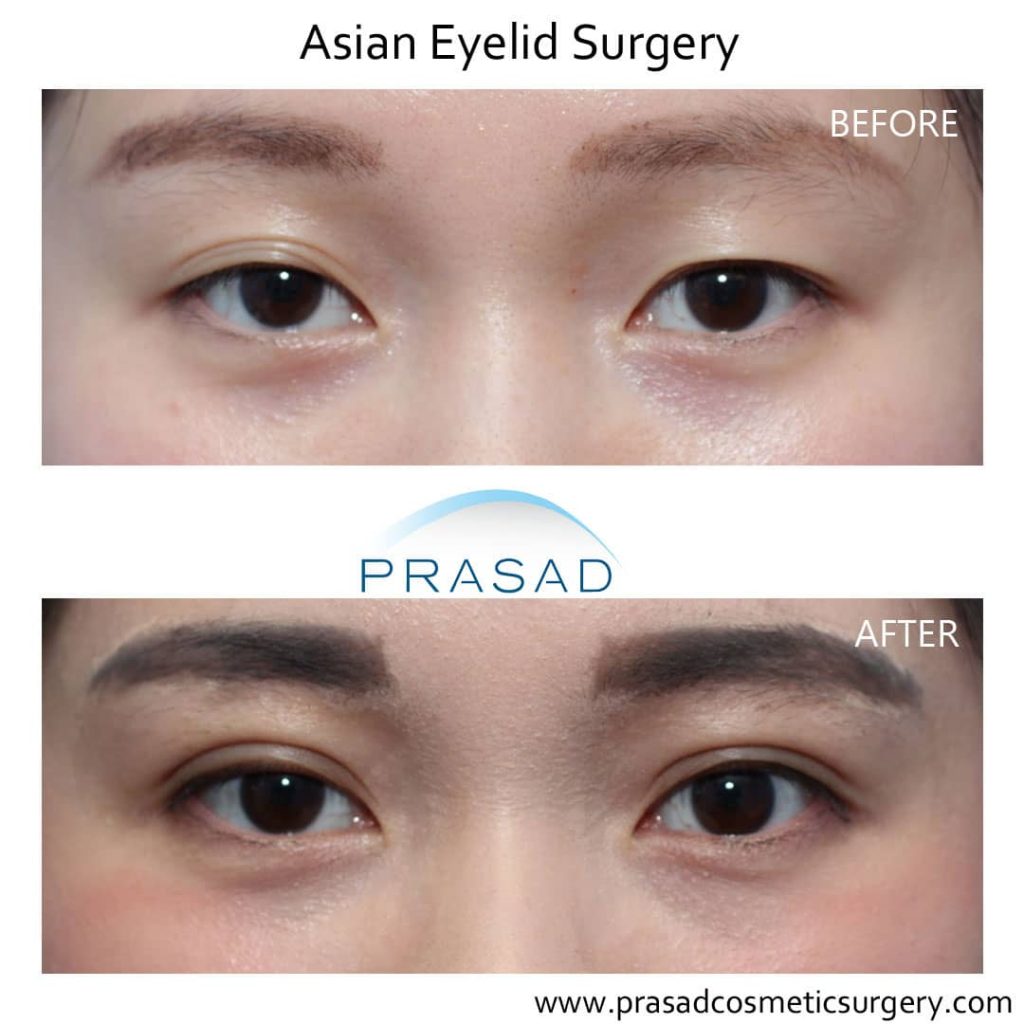
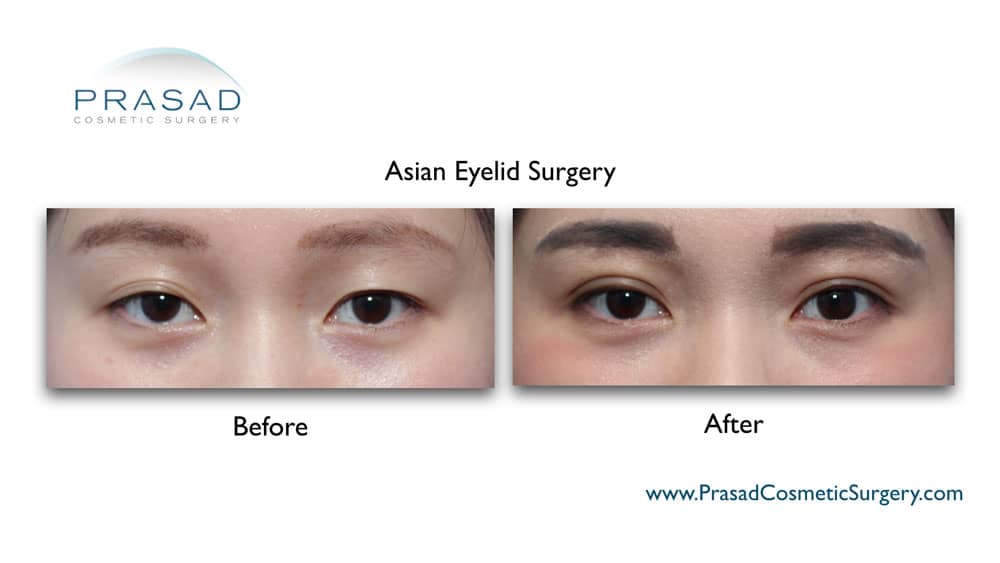
When someone asks if these procedures are incompatible with ethnic identity, I explain that the procedure being performed makes the eyes appear larger by revealing the true shape of the eyes. The fold effectively defines the shape of the eyes prior to the procedure. Following the procedure, the true shape of the eyes is revealed, highlighting the beauty of Asian eyes.
How is Asian eyelid surgery performed?
After showing my patients where the natural eyelid crease would be, measurements are taken and any excess fat or skin is assessed. Measurements are essential for determining where incisions will be made and how excess skin will be removed if necessary. Excess fat above the eyelids is also evaluated because fat can influence the formation of the crease. In general, little to no fat is removed. Marks are strategically placed where small openings will be made to engage the skin with the levator muscle during non-incisional surgery.
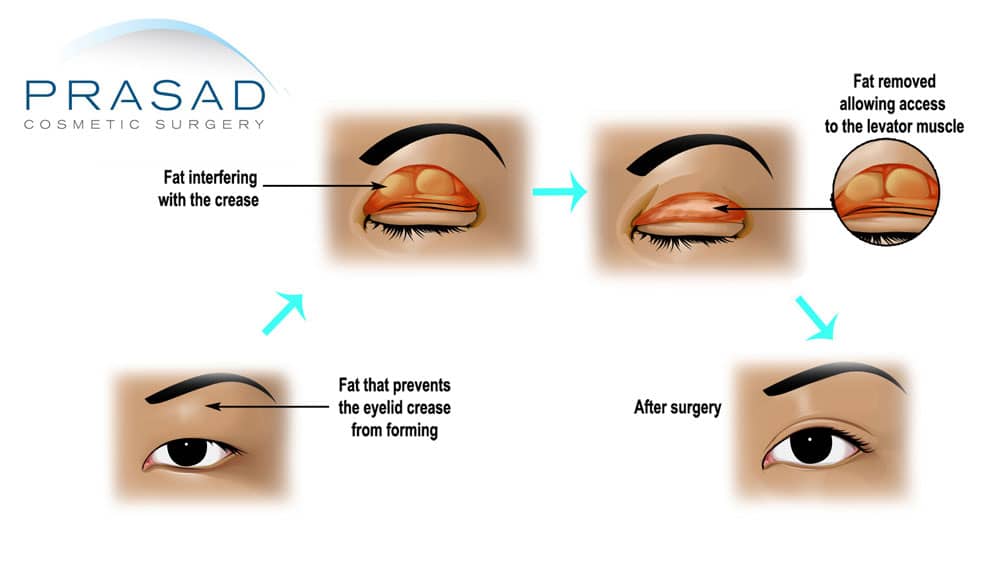
Anesthesia for Asian Blepharoplasty
Non-incisional Double Eyelid Surgery
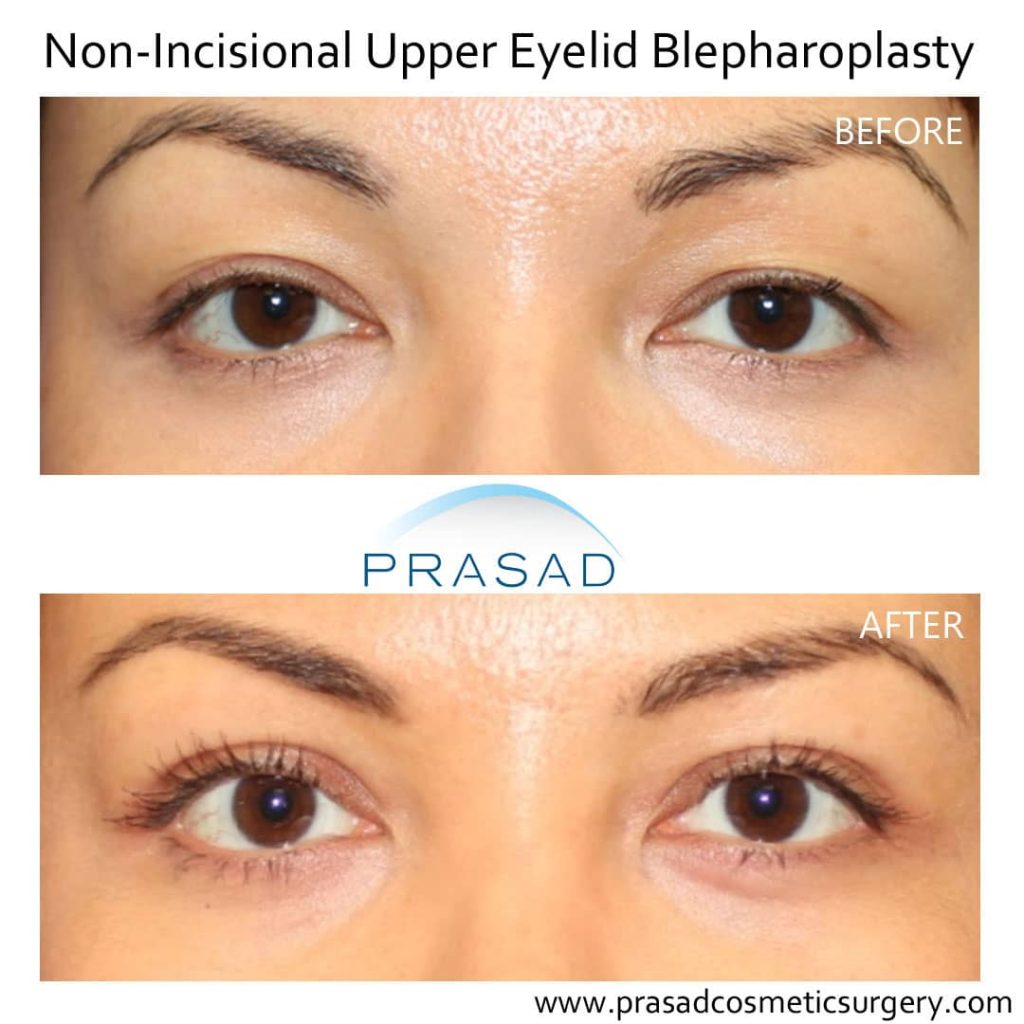
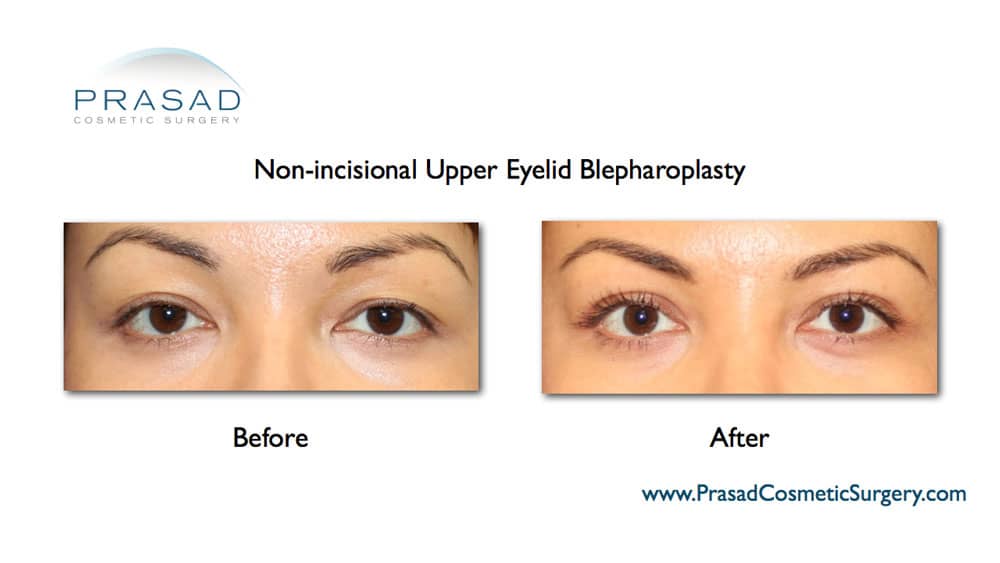
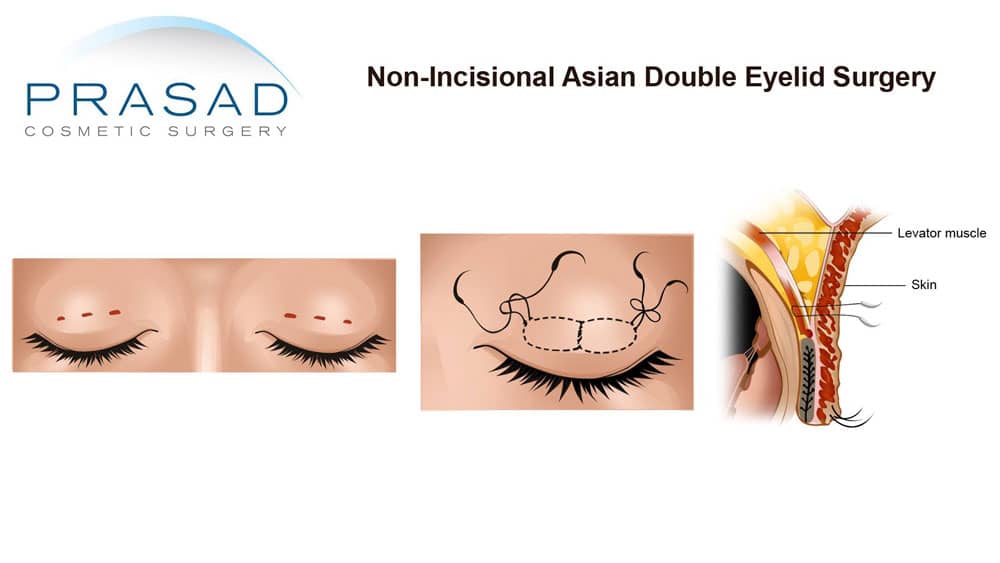
Incisional Eyelid Surgery
I would perform incisional double eyelid surgery if there is extra fat above the eyelid preventing the crease from forming, and excess eyelid skin that partially covers the eyes. Before a thin strip of skin is excised, excess skin is precisely measured to the millimeter. When necessary, some fat is removed using this method. Sutures are then used to close the incision and connect the skin of the eyelids to the levator muscle, forming the eyelid crease.
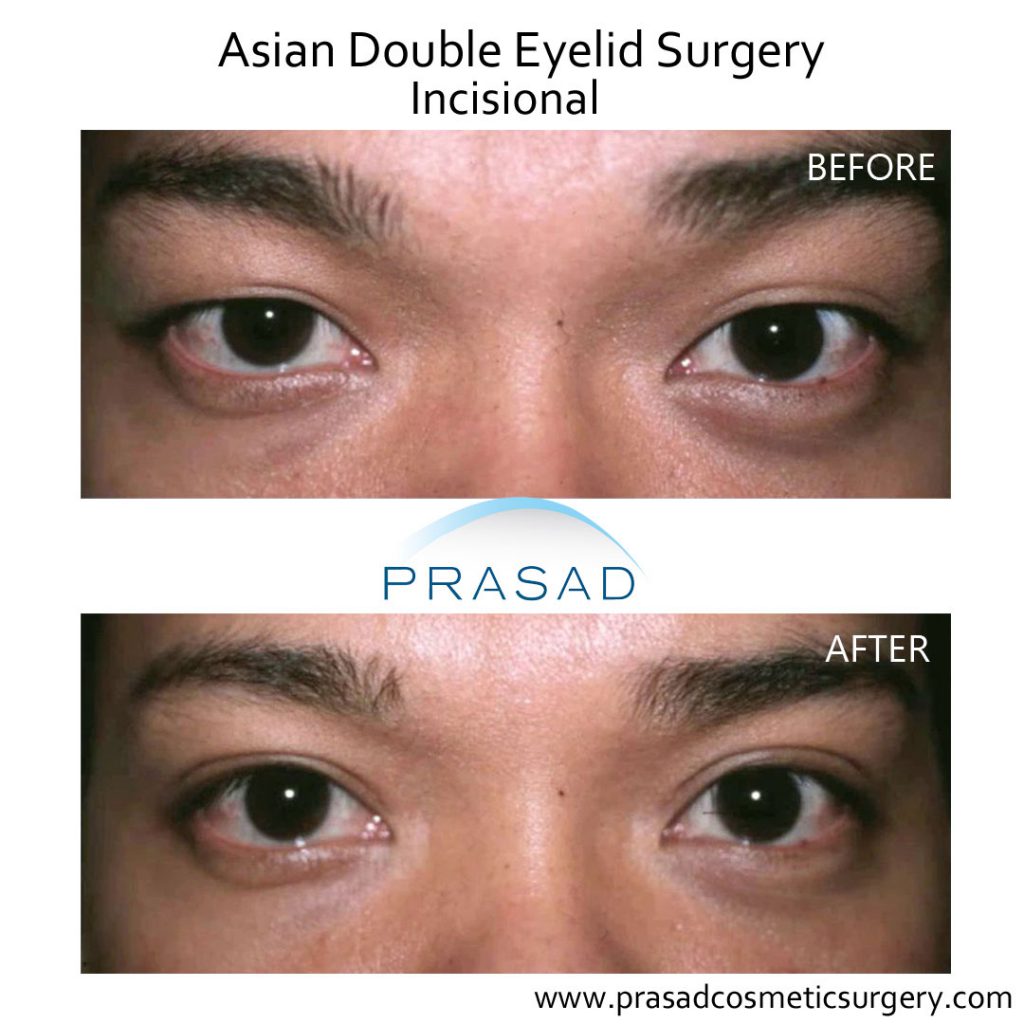
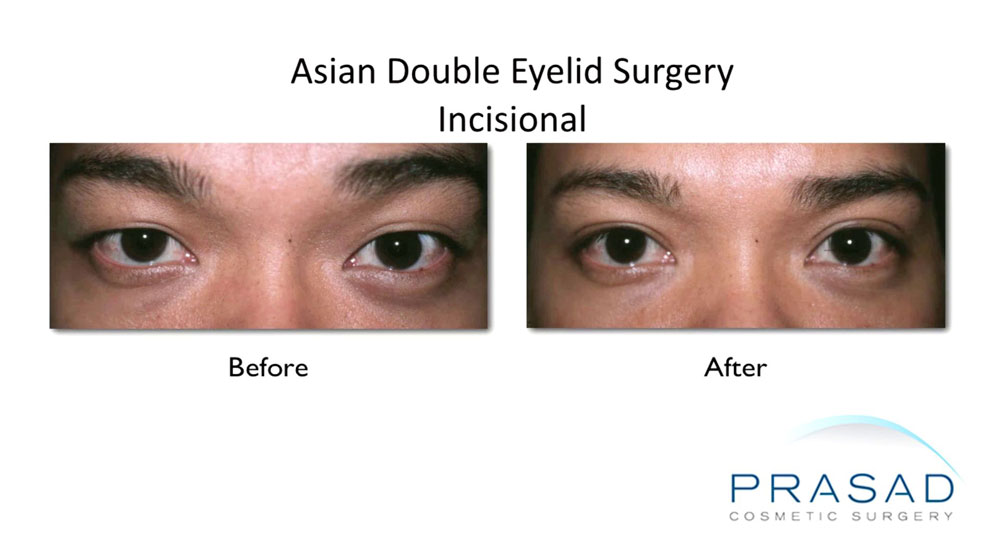
Swelling and Healing
Swelling occurs in varying degrees following the procedure. Patients are advised to use cold compresses for the first two days to reduce swelling. Patients are encouraged to be more active after two days to help the circulation clear the swelling. Warm compresses may also be used to improve circulation and allow the fluid that is causing the swelling to drain. After a week, sutures for incisional surgery are removed.
Many patients are concerned during the early recovery period after double eyelid surgery because temporary swelling can make the eyelid creases appear too deep and too high. It is critical not to be concerned about results during this time and to allow the healing process to take its course.
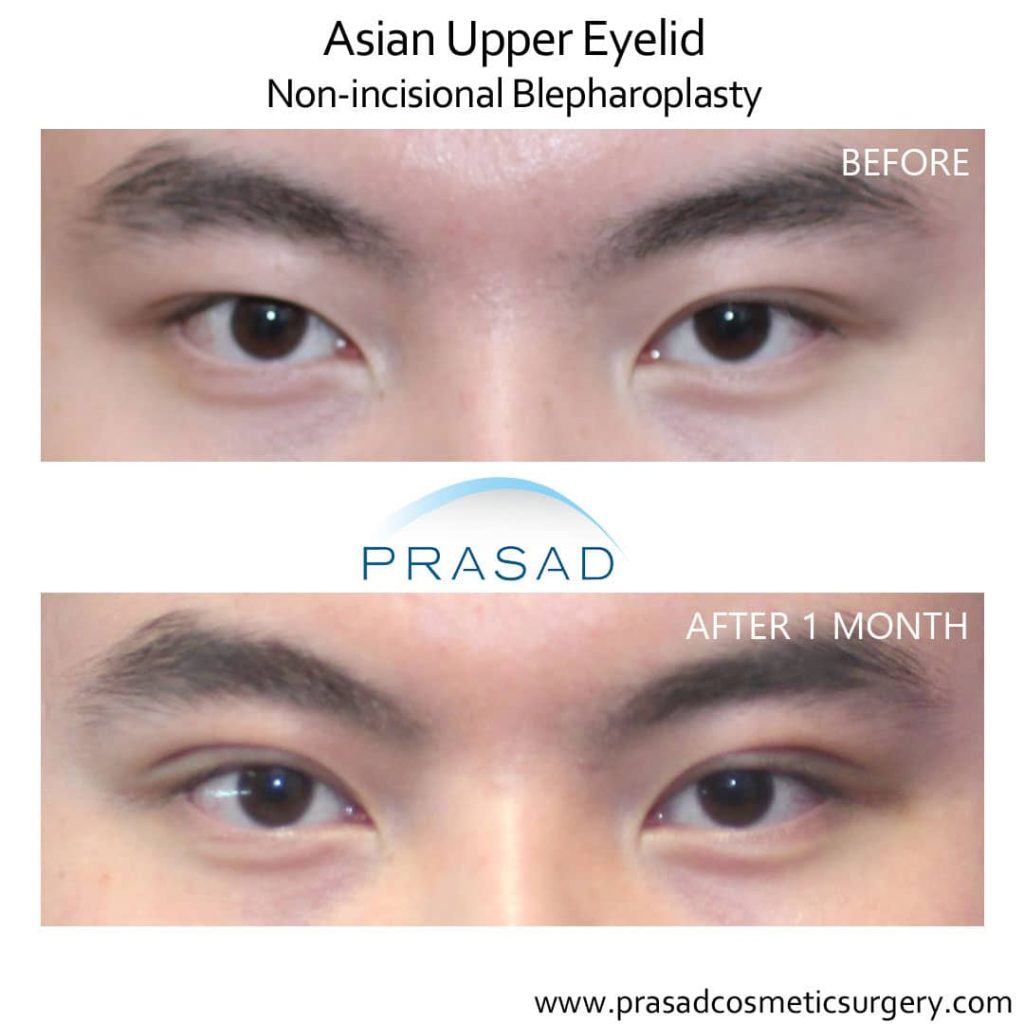
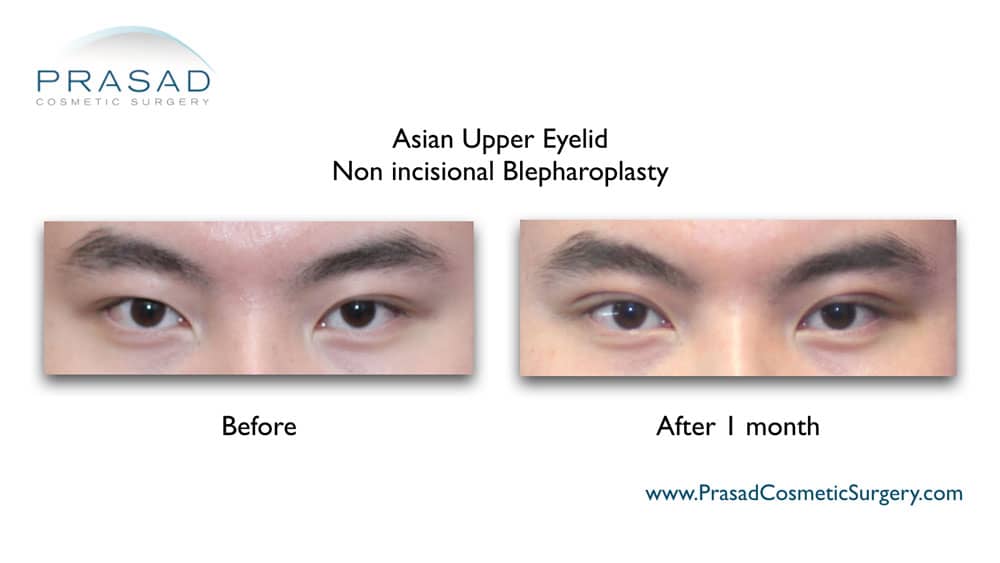
Recovery
Patients usually return to work within a week of surgery, but active healing and swelling resolution can take up to a month. I’ve seen patients look close to their final results in as little as 10 days, but healing that quickly is impossible to predict. While swelling may persist, the majority of it should resolve within the first 1-2 months.
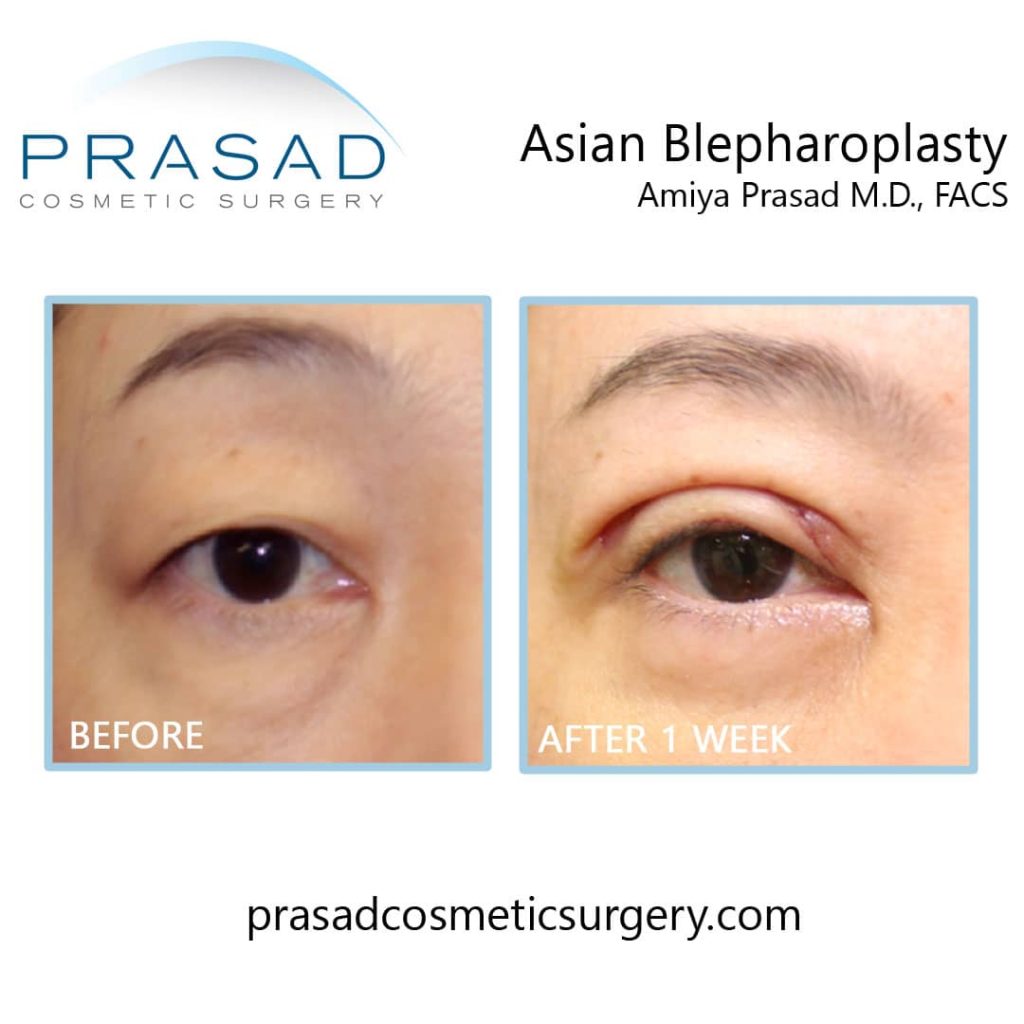
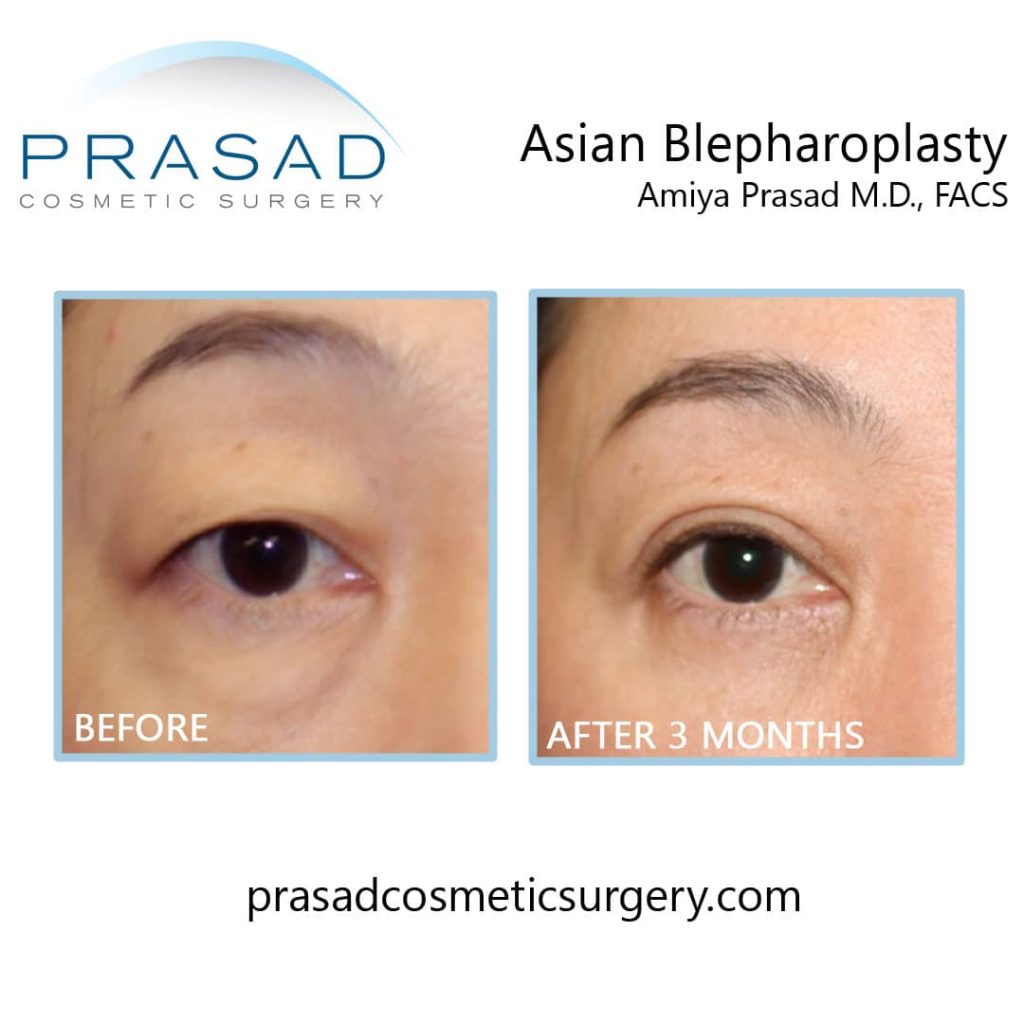
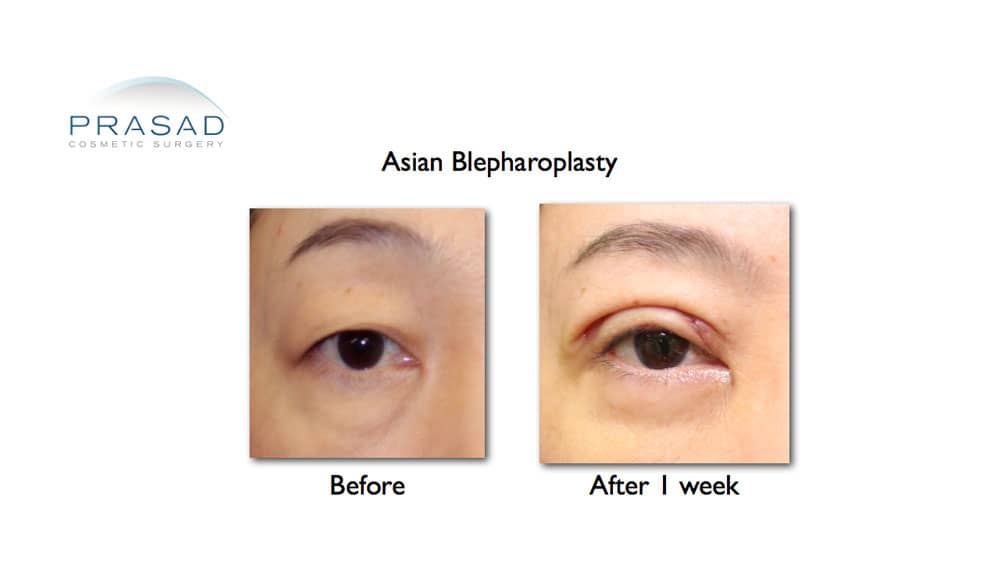

In general, I anticipate that the appearance will be close to the final appearance around 6 months. Swelling may last longer than usual if a patient has a history of allergies, sinus problems, smoking, or other circulation issues.
How to Reduce Swelling After Eyelid Surgery?
Cold compresses help reduce the initial swelling after surgery in the first two days. The clearance of swelling after the first two days is dependent on the amount of swelling and circulation. I encourage my patients to be active by walking, talking, and smiling, and if they intend to be more sedentary, warm compresses can be beneficial.
Upper Eyelid Surgery for Asian Eyes
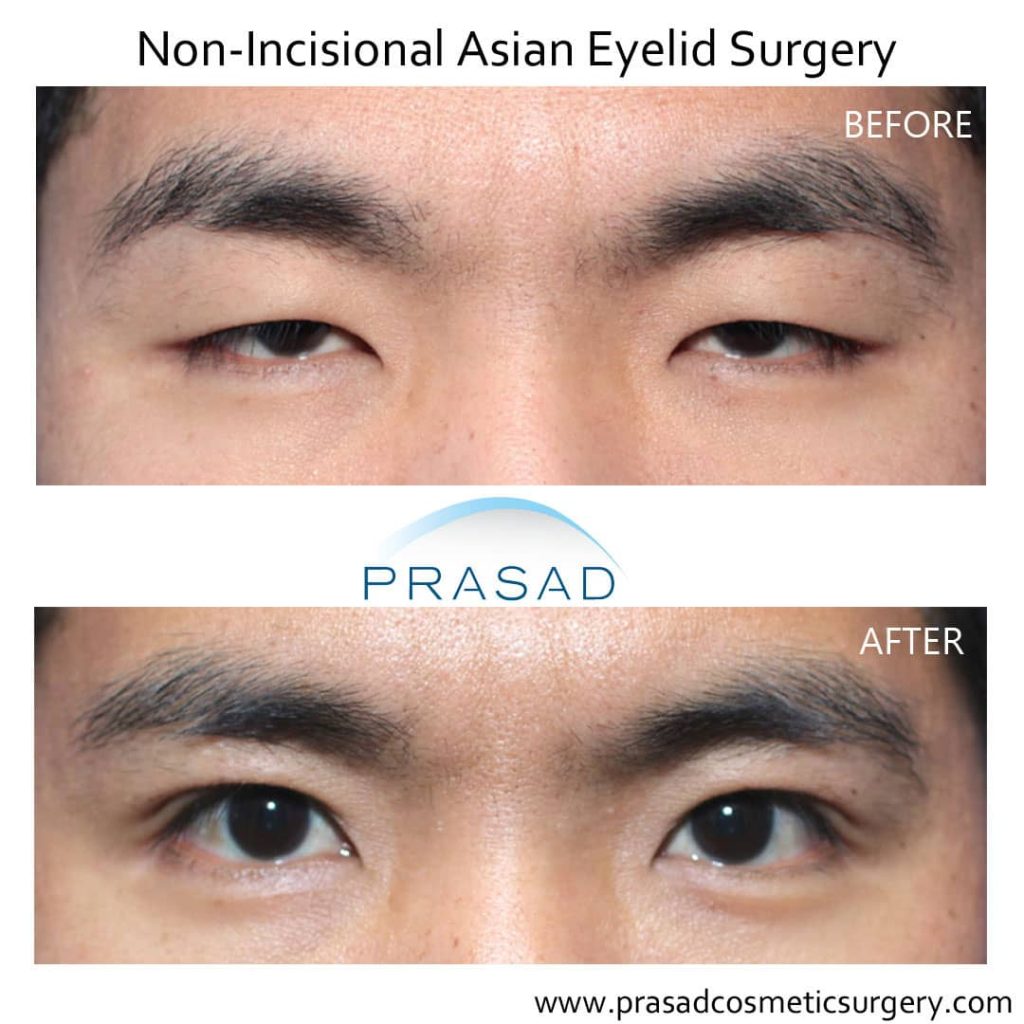
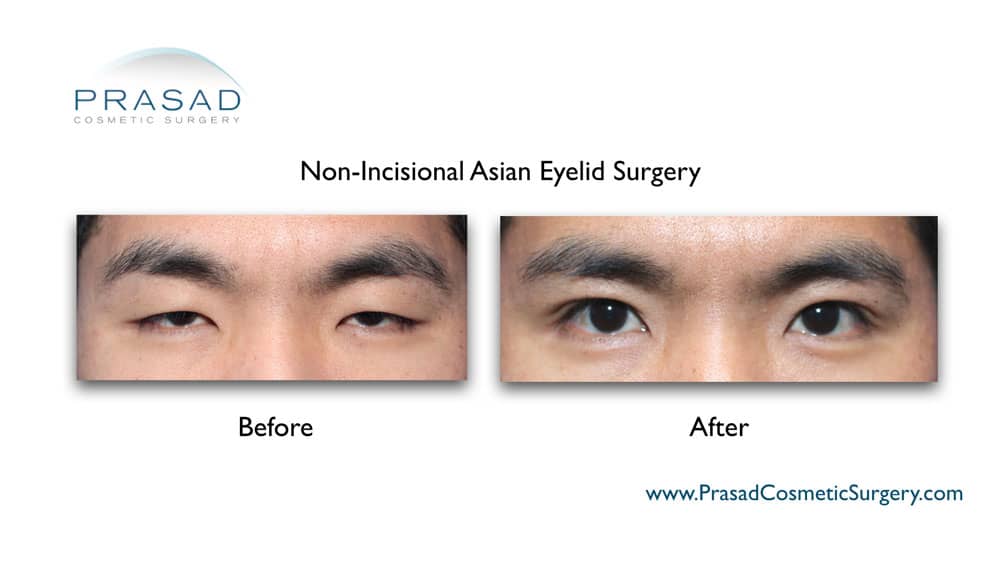
Asian Eyelid Surgery in NYC and Long, Island New York
Dr Amiya Prasad is a Board Certified Cosmetic Surgeon and Fellowship Trained Oculoplastic Surgeon. He’s been in practice in New York City and Long Island for over 25 years. Dr. Prasad performed non-incisional and incisional double eyelid surgery, as well as epicanthoplasty and eyelid ptosis surgery on Asian patients. He is well-known for natural-looking aesthetic approach to eyelid surgery, as well as my methods for achieving a shorter healing time and less postoperative swelling.
To schedule a consultation fill out the form below or contact any of our offices at (212) 265-8877 for the Manhattan, New York City office; (516) 742-4636 for the Garden City, Long Island office; or (703) 356-1336 for the Vienna, Virginia office.

